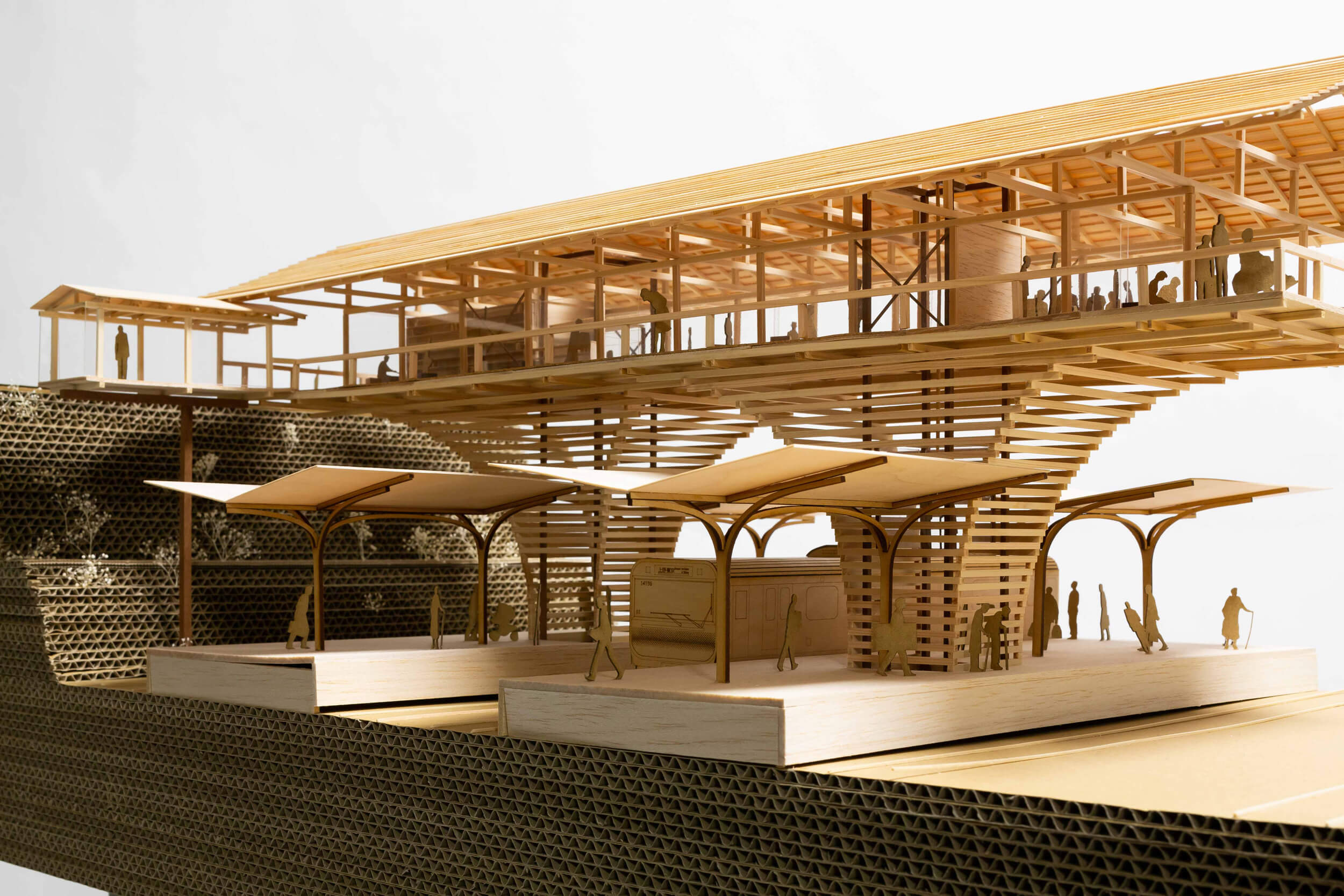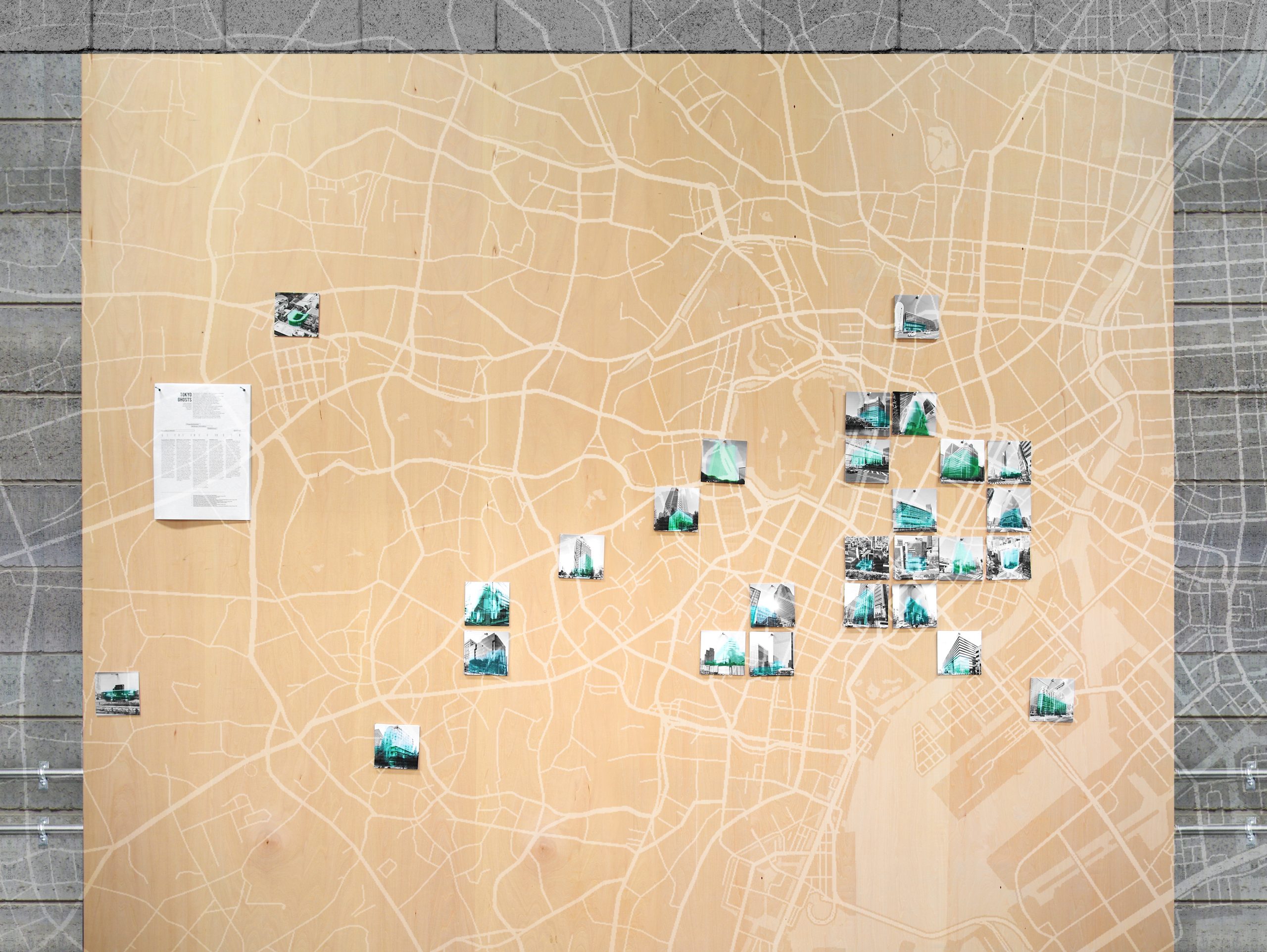Uguisudani station is sandwiched between a love hotel area and a cemetery land. In other words, the spaces of „life“ and „death“ confront each other across the track.There are two overpass bridges made at different times in the Uguisudani station, built at the edge of the land. The first is a striding bridge with only for the stairs built around 1928. It is supported by a light truss structure reusing old rails. The second is an overpass bridge with an escalator and an elevator built around 2001. It is much firmer than the old rail supported by the steel frame round column. These were considerations for people who are unable to climb stairs or use wheelchairs made by modern technology during that period. These consi- derations did not exist in the first generation. Thus, the assumptions of society can be seen in the way the bridges are made. The fact that barrier-free is embodied in various places in urban space is a proof that the so- ciety presumes and accepts physical diversity. On the other hand, attention to psychological diversity is also required in modern times. Although consideration to social minorities such as LGBT is important, what kind of place should be given in the urban space, our society does not know yet. When the station explores psychological diversity, how it would look like? A third overpass bridge in Uguisudani Station is installed. Counseling space that deals with care of the mind will be stationed here. In order to make the stay in the space comfortable even though it is a circulation line of the station, a warm wooden structure was chosen with only an elevator pro- vided as an access. The assumption of society for the near future will be embodied this way.
Student: Hans Henrik
TOKYO_GHOSTS
Tokyo went through a drastic transformation in urban, social, and environmental structures alongside World War II, the bubble economy, pollution, and natural disasters. The Tokyo ghosts project discusses the milestones of the construction, destruction and replacement within Tokyo city. The project helps us to understand more about Tokyo as a city structure. The talk brings about nostalgia, stories, and shared memories from different readers. This paves the way to work more on Tokyo Ghosts from a “collective” point of view. Since we feel the topic is quite big, we’ve therefore decided to call this phase STAGE I. We are looking to the near future to have more participants to take part in this project. In the mean time, we are going to support this research with evidence from history together with architectural events. We are aiming to feed this data over the social medial platforms, mainly Instagram. By doing so, we aim to create a depth to Instagram as a medium which truly has the power to show newfound conceptions of time and space.

